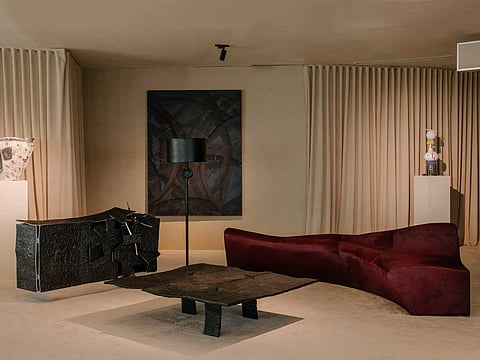'The A/P Room' merges historic and contemporary creativity for global recognition
A new platform is redefining how collectible design is experienced in the Middle East

The launch of The A/P Room marks a pivotal shift in the Middle East’s creative ecosystem, introducing the region’s first platform dedicated to bridging historic and contemporary collectible design. Developed under Atelio, the design vertical of Vivium founded by entrepreneur and art patron Elie Khouri, and led by curator Christelle Bassila, the platform arrives as a catalyst for expanding how design from the region is contextualised, experienced, and recognised globally.
For Bassila, the platform emerged from a gap she observed throughout her career. “The A/P Room was born from a desire to place the region’s creative intelligence within the larger continuum of global design,” she says. Middle Eastern designers, she explains, were producing work of remarkable depth, yet rarely presented within frameworks that placed them in dialogue with global voices or historic design movements. “I wanted to create a platform where these two trajectories could meet. A place where a historic piece and a contemporary regional work could sit side by side and reveal their shared gestures, sensitivities, and cultural echoes… the Middle East is not adjacent to the conversation, but actively shaping it.”
This philosophy became the foundation of the curatorial identity. Bassila’s approach centres on continuity rather than contrast. “Continuity is the foundation of our curatorial language,” she notes. She seeks resonances across materials, gestures, and decades, allowing exhibitions to unfold as passages of ideas rather than isolated displays. “Pieces speak to one another across time, revealing how design evolves, returns, and renews itself.”
This vision guided the platform’s debut at NOMAD Abu Dhabi 2025, where The A/P Room presented “Al Wasl.” Staged within Paul Andreu’s historic terminal, the exhibition explored themes of connection and passage. The first chapter, “Chairs of Departure,” transformed a 22-metre corridor into a procession of iconic chairs from the 1960s to the 1980s. The narrative then shifted to “Transits of Form,” a sculptural exploration of materiality and cultural memory. More than 30 designers, from Zaha Hadid and Ron Arad to Aline Hazarian, Georges Mohasseb and Roham Shamekh, were exhibited together, reflecting the platform’s mission to present design as a continuum shaped by both global and regional voices.
For Khouri, The A/P Room aligns naturally with Vivium and Atelio’s commitment to design, culture, and craftsmanship. “What drew me to The A/P Room was the opportunity to introduce something the region has never truly had, a platform where heritage and contemporary design come together to create depth, personality, and cultural meaning in a space. It also completes the vision we began with Atelio, bringing together contemporary furniture, art, and now collectible design in one harmonious approach to living,” he says. “We saw the shift happening in the region, people investing more in their homes, architecture evolving, and a growing desire for pieces that carry intention and narrative. The A/P Room answers that moment.”
As the platform prepares to open in Alserkal Avenue in 2026, followed by Abu Dhabi in Q3 2026, its ambitions are clear. Khouri summarises the long-term direction: “Ultimately, the goal is to create a movement, one that connects the UAE to the global design world while giving the region’s designers the visibility and opportunities they deserve.”
Sign up for the Daily Briefing
Get the latest news and updates straight to your inbox



